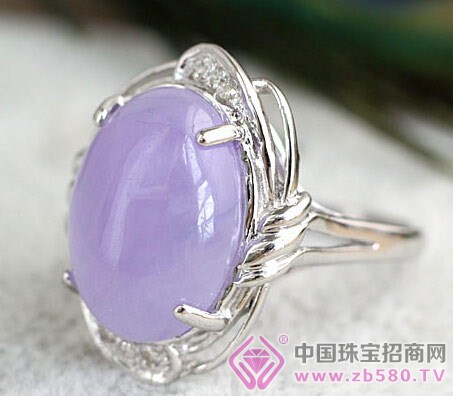As we all know, natural jade is green, but it is not fixed. In the colorful and endless jade world, there is a kind of jadeite that is gradually loved by the world, especially the female compatriots, for its elegance, intellectuality and moisturizing. She is like a good-looking person who is not acquainted with the profound people. Got the cloud and see the moon!" This is the name of everyone, called Purple Emerald, also known as Violet. Today, we will start with a jargon of the purple jadeite variety!

What is "spring"?
In the jade trading market, purple is often called spring color. Why?
The first statement: the original "椿" refers to the camphor tree, the camphor tree sprouts, and the axillary bud is purple. Therefore, the purple of the jade is also called the twilight. Later reduced to "spring";
The second statement: the original "莼", an aquatic herb, its flowering is pink, purple and red, the old generation of jade people will be called "莼花" from the jade image. Later reduced to "spring";
Three: People think that the purple color of eggplant flower is the purest and most beautiful, and the color of purple jade can be compared with it. Eggplant flower is open in spring, so people call it purple "spring". The picture shows the eggplant flower, which is really purple and intoxicating~
Five kinds of purple!
The purple jade that we often say is actually just a general term. Because, according to the richness and saturation of the jade color, the purple jade has royal purple, red purple, blue purple, pink purple, violet five purple points.
(1) Royal Purple: refers to a kind of rich and pure purple, its color tone is very pure, the saturation is generally high, the brightness is medium, thus showing a rich and attractive, graceful beauty. This kind of purple is actually very rare, and it is a theoretical jade. Even in purple jade, it is difficult to find one of them. It has a very high collection value.
(2) Red Violet: It is a kind of purple with a reddish hue. Its color saturation is usually medium, and the type of very high saturation is rare. It is not common in purple jade, and its value is very high.
(3) Blue-violet: It is a kind of purple with a blue color. Its saturation changes greatly. It can be seen from light blue purple to dark blue purple. It is a common type in purple jade, and the jargon is called "jasmine purple".
(4) Pink Violet: It is a light purple color, which may have a reddish or bluish sensation, but it does not reach the level of red purple or blue purple. Although its purple color is still obvious, the saturation is low. It often appears in some jadeite with good water quality and fine texture. Generally speaking, the price is the most affordable.
(5) Violet: It can be said that it is the most common purple jade, and the color can be rich to resemble violet flowers.
In addition, the violet emerald sometimes appears with green, forming a spring color, which is the standard of the typical violet jade.
How to identify?
First of all, a common sense: the true and false of the purple jade can not rely on color!
In the jade market, because of the high-end green jade, there are often falsifications, such as jade c, and the thick purple jade is rare, so some people think that the dark purple jade is a product of artificial fake, and this The concept of purple shades and shades to distinguish the authenticity of colors is not correct.
So, is there any artificially dyed purple jade in the market? Of course! Here are two ways to identify:
First, you can use a magnifying glass to observe the relationship between the distribution of purple and the structure. If the color distribution is well-proportioned, there is no accumulation phenomenon in the cracks and loose places, and the jade meat is pure, then there is basically no big problem. If it is artificially dyed, you will see the infiltrated impurities in the fine cracks in the jade, and there will be accumulation in the loose structure, and the concentration of the color will gradually increase from the inside to the inside or to the sides of the crack. Lighten.
Second, it can be observed by means of UV lamps (ultraviolet fluorescent lamps). Natural purple jadeite generally does not have fluorescence reaction under ultraviolet light; while dyed purple jade has obvious fluorescence under ultraviolet light.
For these two methods of identification, experts reminded that it is best to focus on the magnifying inspection, supplemented by ultraviolet fluorescent lamps, because some high imitation jade, it is difficult to see the original shape under ultraviolet light. Therefore, if there is a lack of jade expertise, it is impossible to distinguish between true and false by UV light!
Low Cut Socks,Women'S Cotton Invisible Socks,Socks Invisible Women,Silicone Non Slip Sock
Shaoxing Evergreen Knitting Co., Ltd. , https://www.egsock.com